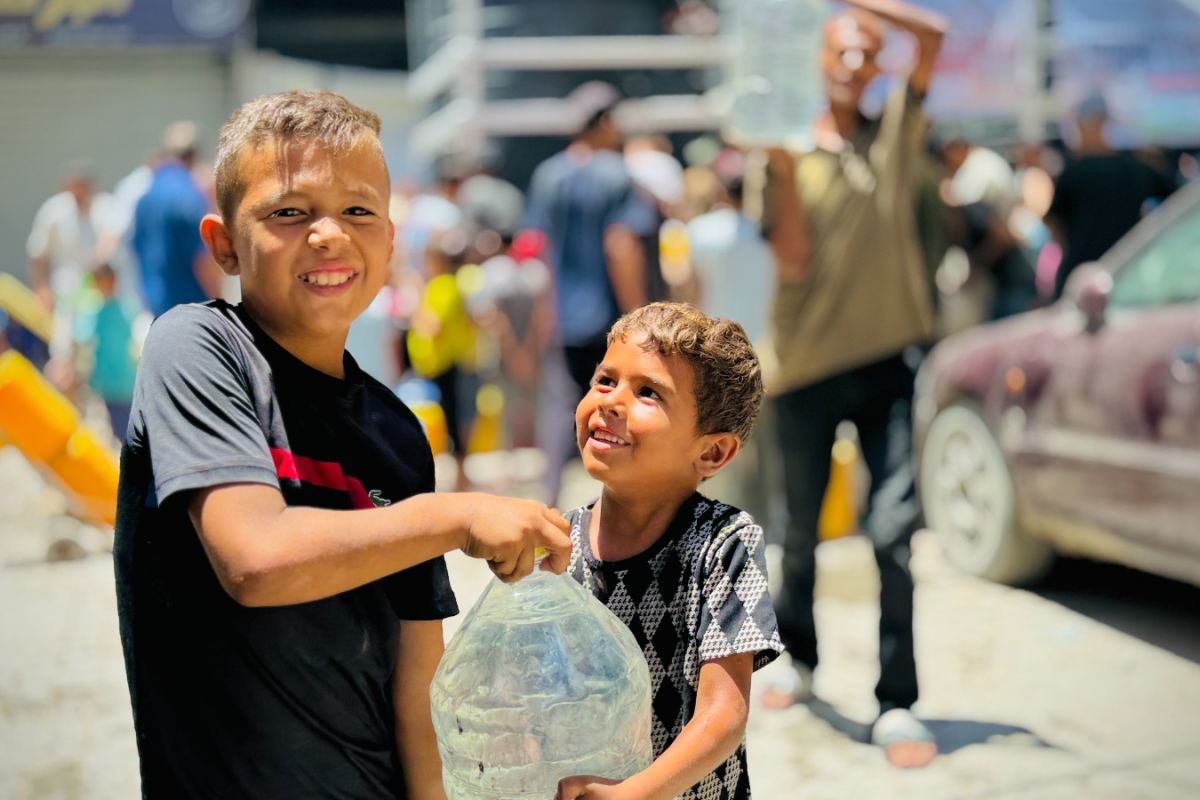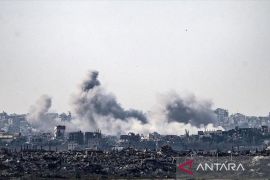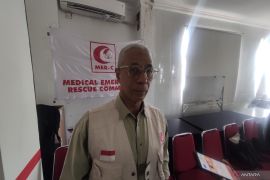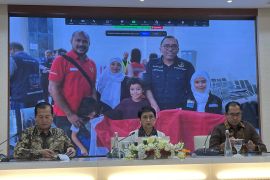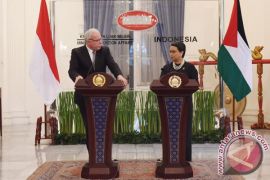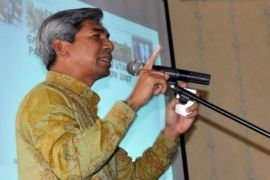Her frail, silent, and malnourished body barely resembles the bright-eyed infant pictured in the photograph next to her bed.
Her mother told RIA Novosti that the photo was taken when Zeinab was 40 days old and weighed around 5.5 kilograms. But now, after months of food aid being blocked by Israel, her weight has dropped by 2 kilograms.
She added that with no milk and no food available, she has to watch her baby suffer and grow weaker every day.
Zeinab is one of thousands of children in Gaza suffering from severe hunger, trapped in a war zone that increasingly resembles a massive detention camp.
Hospitals overwhelmed by Israeli attacks are struggling to care for the rising number of malnourished children and infants.
Her story is just one of many in the crisis-hit enclave that are often reduced to mere statistics in global news reports.
Related news: Indonesia urges UN action as Gaza starves, renews two-state solution
Unbearable reality of hunger
In Gaza, hunger is no longer a threat — it is a grim daily reality. Children who once smiled are now fighting silently to survive amidst war and unbearable hunger.
As a result of international pressure and drawn-out negotiations, some aid trucks have finally been allowed to enter the blockaded Gaza Strip. However, it remains far from sufficient, and its distribution is inconsistent.
As a result, many doubt that the current humanitarian catastrophe can be eased without a substantial increase in aid.
Children are bearing the heaviest burden. According to the World Health Organization (WHO), more than five thousand children under five were treated for malnutrition in the first two weeks of July 2025.
Eighteen percent of them were diagnosed with severe acute malnutrition (SAM), the deadliest form of undernutrition. Consequently, the number of child deaths due to malnutrition has surged.
The WHO reported 74 malnutrition-related deaths in Gaza this year, with 63 recorded in July alone. According to Gaza’s Ministry of Health, a total of 147 people, including 88 children, have died of hunger so far.
The crisis is also threatening thousands of pregnant women. Alaa Alskafi, executive director of Al Dameer Foundation for Human Rights, told RIA Novosti that 11 thousand pregnant women in Gaza are at serious risk of malnutrition and dehydration.
Related news: Indonesia condemns Israeli strike on Gaza's only Catholic church
Past prosperity, growth
Jerusalem and Gaza were once thriving urban centers at the heart of the Levant, rich in culture, faith, and trade.
During the Umayyad and Abbasid Caliphates (from the 7th century), Palestine witnessed a renaissance in science, architecture, and commerce.
Jerusalem, revered by Muslims, Christians, and Jews, became a beacon of religious tolerance and knowledge. Monuments like the Dome of the Rock stood alongside vibrant markets and academic institutions.
Gaza flourished as a major trading hub connecting Egypt, Arabia, and the Eastern Mediterranean during the golden age of Islamic dynasties.
Even after European-led upheavals, the region revived during the Ayyubid and Mamluk periods, supported by charitable endowments that funded hospitals, schools, and public services.
The Ottoman Empire, which governed from 1517 to 1917, maintained this prosperity through stable, decentralized rule that embraced religious and cultural diversity.
Related news: Indonesia's PMI sustains clean water support for Gaza Palestine
Collapse of stability
The fall of the Ottoman Empire after World War I marked the beginning of deep instability in Palestine. Under British rule (1917–1948), the controversial Balfour Declaration endorsed a Zionist homeland while disregarding the native Arab population.
British colonial policies enabled Jewish immigration and land acquisition, fueling tensions and uprisings, including the brutally suppressed Arab Revolt (1936–1939).
The creation of Israel in 1948 triggered the Nakba — the mass displacement of over 750 thousand Palestinians. Their homes were seized, villages destroyed, and massacres like Deir Yassin spread fear across the region.
Instead of bringing peace, Israel’s founding prompted new waves of military occupation, apartheid policies, and illegal settlement expansion.
Now, Gaza, once a vital Mediterranean city, has turned into an open-air prison, frequently bombed and blockaded. Jerusalem, sacred to billions, is being gradually annexed, its indigenous residents stripped of rights through legal and physical coercion.
What was once a land of coexistence and prosperity has become fragmented by ghettos, checkpoints, and trauma. Unlike past empires that allowed pluralism, the Zionist project aims for dominance, undermining the region’s long-standing stability.
Related news: FM condemns killing of Gaza's Indonesian Hospital director
Reviving the Two-State Solution
Amid genocide, famine in Gaza, and escalating settler violence in the West Bank, the world is rallying behind a renewed call for the two-state solution.
The High-Level International Conference on the Peaceful Resolution of the Palestinian Question was held at the UN Headquarters in New York from July 28 to 30, 2025. It was co-chaired by Saudi Arabia and France.
According to the Saudi Press Agency, at the conference, Saudi Foreign Minister Prince Faisal bin Farhan and French Foreign Minister Jean-Noël Barrot reaffirmed their countries’ commitment to a just, comprehensive, and time-bound solution.
The conference proposed concrete measures: supporting institutional reform in Palestine, providing development assistance, safeguarding the Palestinian economy, and creating a global coalition to oversee the implementation of the two-state framework.
The 1967 borders, with East Jerusalem as the Palestinian capital, were reaffirmed as the basis for a lasting peace agreement.
Saudi Arabia emphasized that peace in the region cannot be achieved without justice for the Palestinian people.
Related news: Indonesia, Saudi Arabia urge global response to Gaza crisis
Suffering not normal
Condemning both the October 7 attacks and the devastation in Gaza, UN Secretary-General António Guterres highlighted the urgent need for such a solution.
He stressed that international law must be applied equally, adding that annexation, occupation, and mass suffering cannot be accepted as normal.
The best path forward requires global solidarity, accountability, and a renewed Palestinian commitment to reform. A revived two-state solution remains the only viable alternative to apartheid, endless war, and humanitarian collapse.
It will offer Palestinians not only the right to survive, but also to live, build, and thrive — as they once did for centuries under fair and inclusive rule.
Like all nations, Palestinians deserve to live with dignity, security, and hope — not hunger, siege, and displacement.
The starving children of Gaza and displaced families in East Jerusalem must not be seen as doomed by fate. Their suffering is man-made — and it can be ended through global cooperation.
The two-state solution must be turned into real action to rebuild what was destroyed, restore a people’s dignity, and revive the spirit of coexistence and prosperity that once defined Palestine.
Related news: Malaysia, Indonesia on the same page on Palestine: Anwar
Translator: Primayanti
Editor: Rahmad Nasution
Copyright © ANTARA 2025
